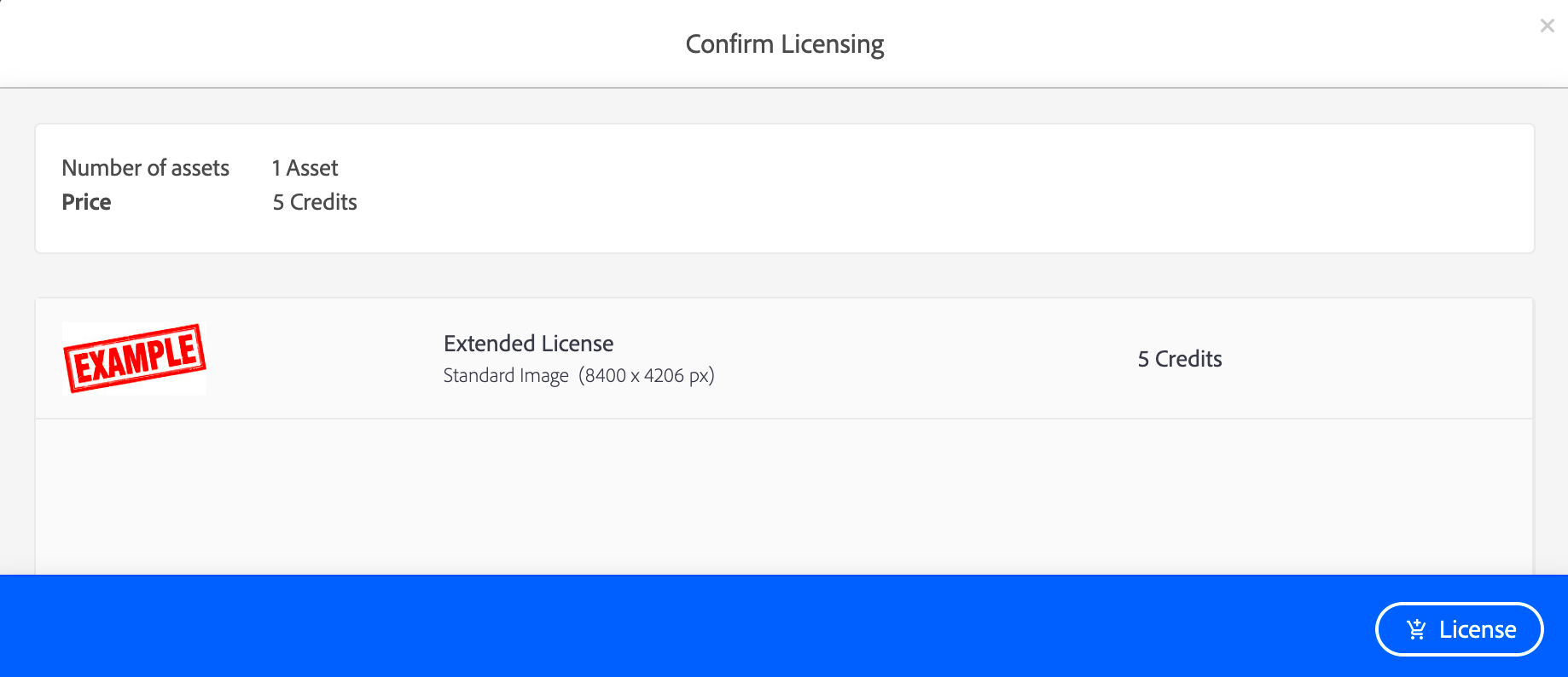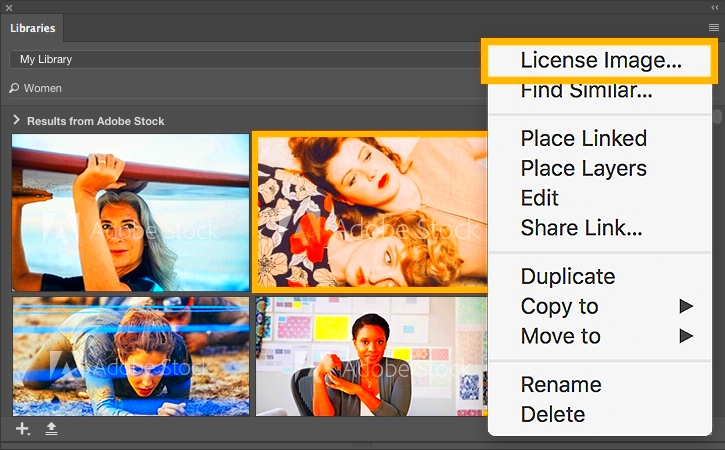When I began my journey with
Adobe Stock I found the idea of licensing quite daunting. There are so many stunning visuals available but you can't simply take them and use them freely, everywhere. There are guidelines in place and that's where licensing plays a role.
Adobe Stock licensing is essentially the approval required to lawfully utilize a stock photo, video or asset. Grasping these licenses is crucial, for adhering to copyright regulations and believe me it's not as intricate as it appears. Let's simplify it together.
Types of Adobe Stock Licenses
 Adobe Stock
Adobe Stock provides a range of licenses tailored to your specific asset usage requirements. It's not a case of a solution fitting all and that's advantageous as it allows you to select what aligns with your needs without incurring costs for unused features. The primary categories include.
- Standard License: This is for everyday use. If you’re working on a website, social media post, or a blog like this one, the standard license usually has you covered.
- Extended License: This is for when your project involves higher stakes, like selling products that feature the image. You’ll need this if the image is a core part of something you’re selling commercially.
Here’s a friendly piece of advice. Back when I was just starting out I frequently opted for the regular license without realizing that my project actually needed an upgraded version. Taking some time to do research can really make a difference and help you avoid a lot of hassles down the road!
Understanding Standard Licenses
The typical license is the choice for individuals particularly when it comes to creative endeavors that don't involve selling. What does this entail? Essentially if you're building a site crafting a social media update or putting together a brochure the standard license should suffice. However there are a few considerations to bear in mind;
- Non-commercial usage: You can’t sell products that heavily feature the image. For example, you can’t print it on t-shirts and sell them.
- Limited copies: Standard licenses allow up to 500,000 copies or impressions, which sounds like a lot, but if you're going viral, you might hit that limit faster than you think!
- No trademarks: You can’t use the image as a logo or part of a trademark. If you’re thinking of branding, you’ll need an extended license.
I recall a buddy of mine putting together a site and opting for a stock photo as the header. It turned out great! However when he attempted to incorporate the same picture into a product that’s when things became complicated. Therefore it’s essential to pay attention to those little nuances!
Exploring Extended Licenses
Here’s the beauty of it:- Unlimited prints and impressions: Unlike the standard license, there's no 500,000 copy limit. So if your product takes off, you don't have to worry about hitting a ceiling.
- Commercial use: You can use the image in products you're selling. Whether it's a design on a bag or a key visual on a packaging box, you’re covered.
- Digital templates: If you’re designing templates or other items that people will customize, the extended license has your back.
I recall the moment when my cousin who operates a modest online shop received a warning for utilizing an image without proper licensing. It wasn't done out of intent he simply wasn't aware. With a brief explanation about licenses he got back to business selling customized notebooks adorned with stunning stock images, all without any worries.
Usage Rights and Restrictions
Here’s what you need to keep in mind:| What You Can Do | What You Cannot Do |
|---|
- Use images for personal or commercial projects (with proper license).
- Edit or customize the images to fit your design.
- Use images on websites, social media, blogs, and marketing materials.
| - Use images in logos or trademarks (standard license restriction).
- Resell the images as standalone files or in a way that competes with Adobe Stock.
- Claim ownership or copyright over the image.
|
I discovered this lesson the hard way when I incorporated an
Adobe Stock image into a small e book cover. A friend brought to my attention that using the image as the focal point of something for sale required an extended license. Fortunately it was an easy issue to resolve but it really drove home the significance of comprehending usage rights before diving into a project.
How to Choose the Right License for Your Needs
Here’s a handy reference I’ve put together through the years.- For personal or small commercial projects: A standard license should be enough. If you're working on blog posts, social media, or even a website that doesn’t sell products, this will cover your needs.
- If you plan to sell the item: Go for an extended license. Whether it’s merchandise, packaging, or even an app where the image is integral, this is the safer bet.
- High-traffic or mass distribution: If your project will hit a large audience – say, over 500,000 impressions – you’ll want the extended license, especially if it's central to your product or brand.
One tip I wish someone had shared with me early on is this:
Always think long-term. Sometimes we pick a license thinking it’s enough for now, but later we realize we need more usage rights. So, plan ahead, and don’t be afraid to invest in the right license from the start.
Common Licensing Mistakes to Avoid
When I began using stock photos I stumbled upon a few blunders and I really wish someone had given me a heads up about them. The licensing process may appear simple at first glance but just one tiny mistake can result in major inconveniences. Throughout the years I’ve picked up some valuable insights and I’m ready to assist you in steering clear of those same traps.
Here are some typical errors to avoid when it comes to licensing.- Using the wrong license: This happens more often than you think. For instance, using a standard license when you need an extended one for commercial products. I learned this the hard way when a friend got a copyright notice for using an image on a product they were selling online.
- Not reading the terms: Many people, including myself at first, skip over the fine print. But trust me, it’s worth the read. Each license has its own terms, and what works for one project may not work for another.
- Assuming images are free after purchase: Buying a license doesn’t mean you own the image. You’re paying for the right to use it under certain conditions. I’ve seen people get into trouble because they thought the image was theirs to use however they liked.
- Forgetting to renew licenses: Some licenses are time-based, and it’s easy to forget to renew them. One of my friends lost the right to use an image in their online campaign simply because they didn’t renew the license.
Once you grasp the intricacies of licensing it becomes less challenging. However these minor errors can significantly hinder your progress. Paying attention to the finer points is key.
Benefits of Proper Licensing
Here are some key benefits:- Legal protection: One of the biggest benefits is knowing you’re legally covered. This means no unexpected fines or notices. Trust me, nothing kills creativity faster than a legal battle over image use.
- Professional credibility: When you license images properly, it shows clients and collaborators that you take your work seriously. I’ve seen it make a real difference in the way I’m perceived as a professional.
- High-quality assets: With a licensed image, you know you're getting something high-quality and unique, rather than relying on free, overused images. This has made my projects stand out in ways I hadn’t anticipated.
- Flexibility for future projects: By choosing the right license, you give yourself the freedom to expand a project. For example, if you start with a blog but later decide to turn that content into a book, having the correct license means you don’t have to worry about re-licensing the image.
In essence obtaining licenses is similar to establishing a solid base for your artistic endeavors. It enables you to concentrate on your strengths – the act of creating – without any interruptions.
Frequently Asked Questions
People often get mixed up about
Adobe Stock licenses and I frequently receive similar inquiries. To address this, I've compiled a list of the questions that come up the most.
Do I need a license even if I’m just using the image for personal projects?
- Yes, even for personal use, you need a license to use stock images legally. Whether it's a blog, website, or personal social media post, licensing is essential.
What happens if I use a standard license for commercial products?
- If you use a standard license for something like selling t-shirts or mugs with the image on them, you might face legal action. You need an extended license for that kind of use.
Can I edit and modify the stock images I license?
- Absolutely! Adobe Stock allows you to modify and customize the images as long as you stay within the terms of your license. Just be sure you’re not using it in a way that violates those terms.
Is there a limit to how many times I can use an image with a standard license?
- Yes, the standard license allows up to 500,000 copies or views. If you expect more reach, consider an extended license.
Can I use Adobe Stock images as a logo or part of a trademark?
- No, stock images cannot be used as logos or part of any trademark. For that, you’d need to create or commission something entirely original.
 Adobe Stock provides a range of licenses tailored to your specific asset usage requirements. It's not a case of a solution fitting all and that's advantageous as it allows you to select what aligns with your needs without incurring costs for unused features. The primary categories include.
Adobe Stock provides a range of licenses tailored to your specific asset usage requirements. It's not a case of a solution fitting all and that's advantageous as it allows you to select what aligns with your needs without incurring costs for unused features. The primary categories include.
 admin
admin








